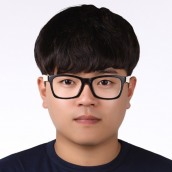 이미지 확대보기
이미지 확대보기According to Samsung Electronics on the 26th, it will release 128TB eSSD based on Quadruple Level Cell (QLC), which boasts the largest existing capacity and data processing speed in November. This product, which Samsung Electronics unveiled at the Flash Memory Summit 2024 on the 6th, has specifications such as a continuous read speed of 7.5GB/s and a continuous write speed of up to 3GB/s.
According to market research firm TrendForce, eSSD orders from major big tech companies such as Google, Amazon, and Microsoft increased by about 80% in the third quarter of this year compared to the fourth quarter of last year.
“The advancement of AI technology requires the growth of memory semiconductors,” said Jim Elliott, Executive Vice President, DS (Semiconductor) Division, Americas, Samsung Electronics, at the event. ”Samsung Electronics will continue to lead the way with low-power, high-performance products and production capacity based on our R&D and technology leadership.”
In fact, Samsung's QLC 128TB eSSD launch is relatively early given that its largest competitor, SK Hynix, is planning to launch the same specification next year. This is likely a move to get a head start on the market as competitors are expected to catch up, especially in the nand market, where Samsung is losing ground to HBM and other AI-focused D-RAMs.
Samsung Electronics leads the global SSD market with about 47% of the market share. SK Hynix, together with its SSD subsidiary Solidame, is in second place with a combined share of about 34%, and Japan's Kioxia is in third place with about 12%.
Although it is still at a relaxed level in market share, we cannot rest assured that both SK Hynix and Kioxia are chasing after each other by expanding their product lineups.
"We are gradually increasing production this year, which was reduced due to NAND production cuts last year," said Kim Seok, head of NAND marketing at SK Hynix, in a second quarter earnings conference call. "We are expanding to focus on some application products that are increasing in demand, and in particular, sales of eSSD products are expected to account for nearly half of total NAND sales."
Japan's Kioxia, which will be listed in October, will strengthen its product competitiveness based on investment. With this listing, Kioxia plans to expand its R&D and facility investments to catch up with Samsung Electronics and SK Hynix. In particular, Kioxia, which has been focusing on home SSDs, is known to be trying to strengthen its product competitiveness to eSSD.
It is known that Kioxia has recently switched to 100% utilization rate at its Yokaiichi plant in Mie Prefecture and Kitakami plant in Iwate Prefecture. In addition, it is also preparing investments to convert its production line, which is currently focused on 6th-generation old products, into 8th and 9th-generation high-tech products.
Kim JaeHun (rlqm93@fntimes.com)
가장 핫한 경제 소식! 한국금융신문의 ‘추천뉴스’를 받아보세요~
데일리 금융경제뉴스 Copyright ⓒ 한국금융신문 & FNTIMES.com
저작권법에 의거 상업적 목적의 무단 전재, 복사, 배포 금지








![‘AI 승부수’ 던졌는데…‘펨토셀(초소형 기지국)’ 걸려 넘어진 KT [Z-스코어 : 기업가치 바로 보기]](https://cfnimage.commutil.kr/phpwas/restmb_setimgmake.php?pp=006&w=284&h=214&m=5&simg=2025120722444001671dd55077bc221924192119.jpg&nmt=18)










